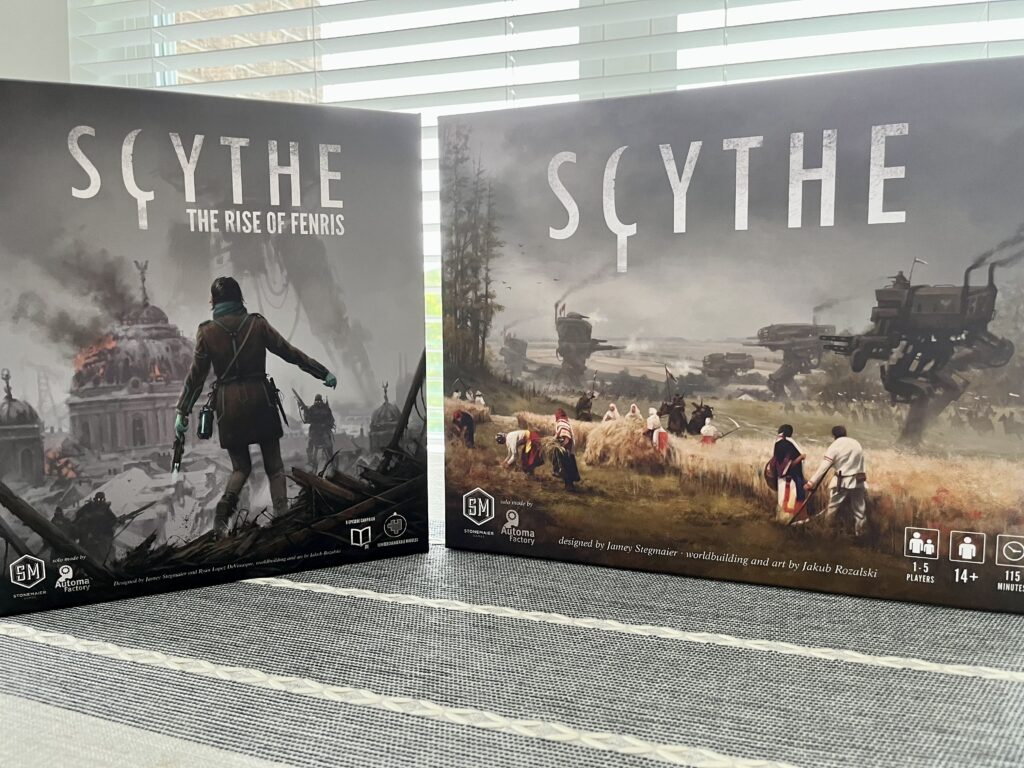Hi, and welcome to my first official blog post! If you’d like to learn more about my journey into board gaming, see the About page. In these posts, I will focus more on discussing games I’ve been playing, and what I like and don’t like. I may even throw in the occasional top 10 list or talk about some of my favorite board games of all time. So, without further ado, let’s jump into a few recent highlights.
The Gallerist
- Designer: Vital Lacerda
- Complexity: High
- Time: 60-150 Minutes
- Players: 1-4
- Main Mechanisms: Action Selection

Let’s start with one of the heaviest games I’ve played recently – The Gallerist, designed by one of my favorite designers, Vital Lacerda. The Gallerist is a game about running your own art gallery, and one of my favorite elements of the design is how well the theme is truly integrated with the mechanisms. I can’t say I’ve ever been a museum curator, but if I was, I imagine I would be doing many of the same actions as in the game.
For me, the best part of the game is discovering artists, promoting them to increase the value of their artwork, and then selling their works for profit. Like most Lacerda designs, the game is very much an efficiency puzzle. At any given time, there are eight different potential actions you can take, and the game is all about figuring out when to time them all, so that everything comes together. In addition, for a heavy euro, there is plenty of player interaction, from the kick-out mechanism that allows you to take additional actions on other players’ turns, to the global artist market.
No game is without caveats, so while I enjoy the kick-out mechanism, I found that it can slow the game momentum, and there were multiple times where we said “Whose turn is it again?” after someone had taken their kick-out action. In addition, since the artists are shared between players, we found that there wasn’t as much movement in artist fame levels at lower player counts. Finally, The Gallerist is a heavy game, so if you’re someone who is new to the hobby or you don’t like complex games, I probably wouldn’t recommend starting with this one.
Overall, I really enjoy The Gallerist, and it will likely stay in my collection for a long time. While the game is very rules intensive, the theme makes the game easier to comprehend and jump back into. I own or have played many of Lacerda’s other designs, and while I haven’t played Vinhos or Kanban as recently, The Gallerist might be my favorite of his designs at the moment.
Scythe + Rise of Fenris
- Designer: Jamey Stegmaier
- Complexity: Medium
- Time: 90-115 Minutes
- Players: 1-5
- Main Mechanisms: Action Selection, Engine-Building

Next, I’ve been working my way through The Rise of Fenris expansion for Scythe. I won’t go into any spoilers, but we are six episodes into the campaign, and I’ve really been enjoying how the expansion shakes the core game up. The campaign really encourages you to play a little differently than you would in base Scythe. Similar to The Gallerist, this game is also very much a timing/efficiency puzzle; you should be aiming to take both the top and bottom actions as often as possible. I also enjoy how quickly games play out. With four players, we’re easily able to knock out a scenario in less than an hour and half, which is good for games of this weight.
One thing I have noticed with the campaign is that if you don’t do well in the earlier episodes, it can feel like you’re playing at a disadvantage during the latter episodes with the way that rewards are given out after each scenario. Also, as to be expected, the setup and takedown can be a bit of a chore with the expansion, but since the games play out fairly quickly, we were able to knock out multiple episodes in a single gaming session. I haven’t made it all the way through the campaign yet as we have two scenarios left, but when I do, I’ll share some non-spoiler thoughts on the entire experience.
Earth
- Designer: Maxime Tardif
- Complexity: Medium
- Time: 45-90 Minutes
- Players: 1-5
- Main Mechanisms: Engine/Tableau Building


Lastly, I recently purchased Earth, a very popular engine, tableau builder game that came out last year. I really like the introduction of simultaneous turns to the classic formula, which means there is very little downtime because you’re almost always getting cool stuff. There’s also a ton of replay value in the game due to the huge number of cards and the double sided starting abilities and objectives – there’s over 360 cards in the game!
As with most card drafting games, there is an element of luck in the card draw, and it can feel frustrating when you’re one type of card short and you aren’t able to draw what you need. Also, outside of the active player choosing which action everyone will take and competing on the shared objectives, there is not much player interaction. I hear that the upcoming expansion is designed to help in these regards. Overall, I don’t mind the card luck or player interaction much here, mostly because I enjoy the core loop in the game of building and triggering my engine so much. The game also plays fairly quickly, and experienced players can likely knock out a two-player game in less than an hour. I need to play this a few more times to figure out where Earth lands in my rankings, but I can definitely see why the game received so much praise when it came out last year.
With that, I’ll wrap up my first post! I’d love to hear your thoughts on any of the games I’ve mentioned, future content, or format in the comments section below. Happy gaming!
